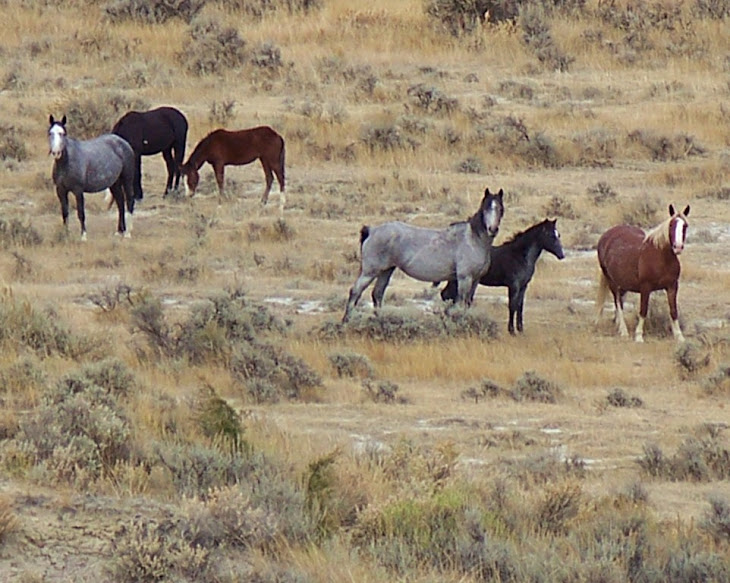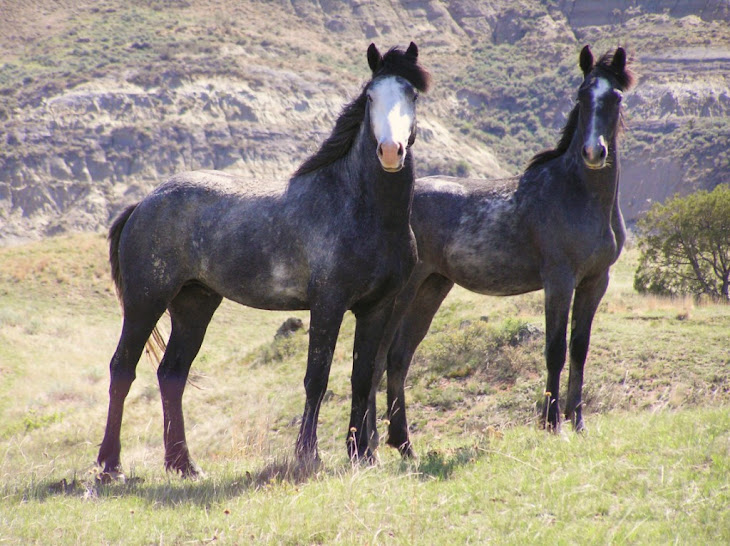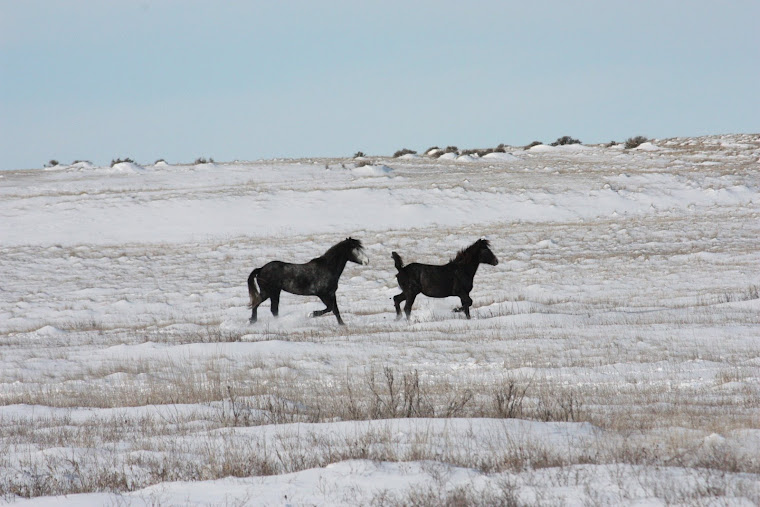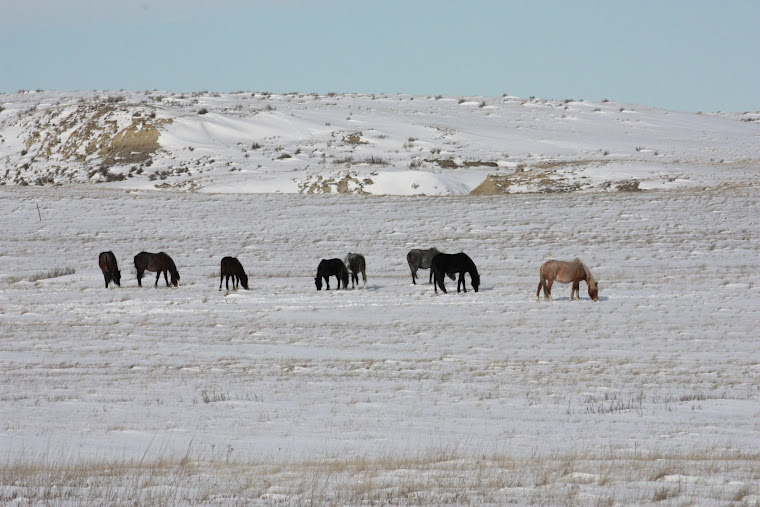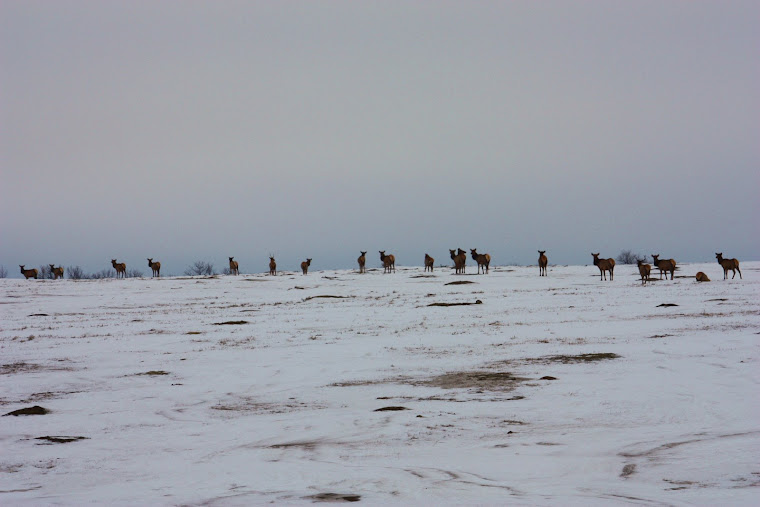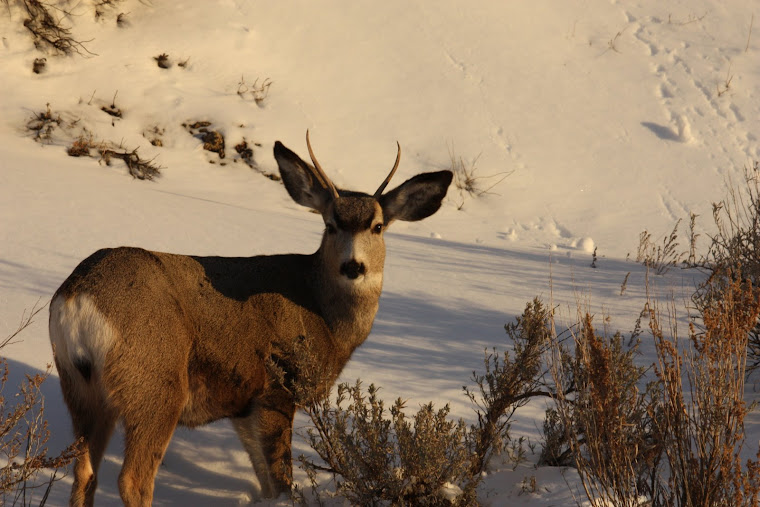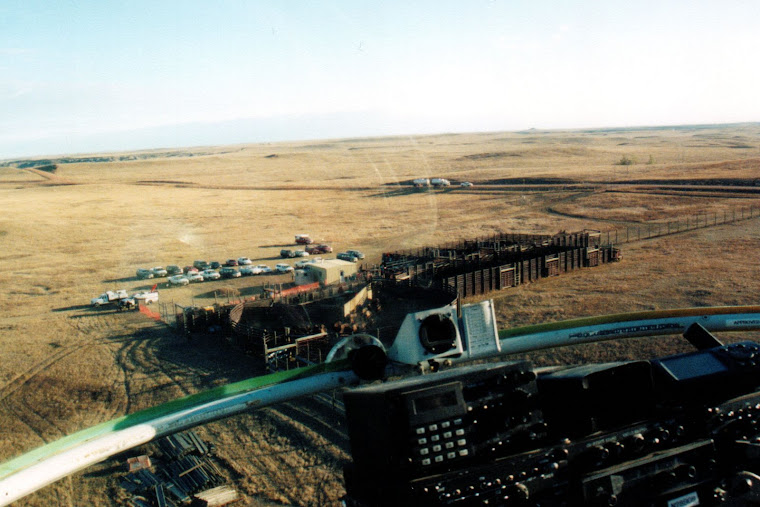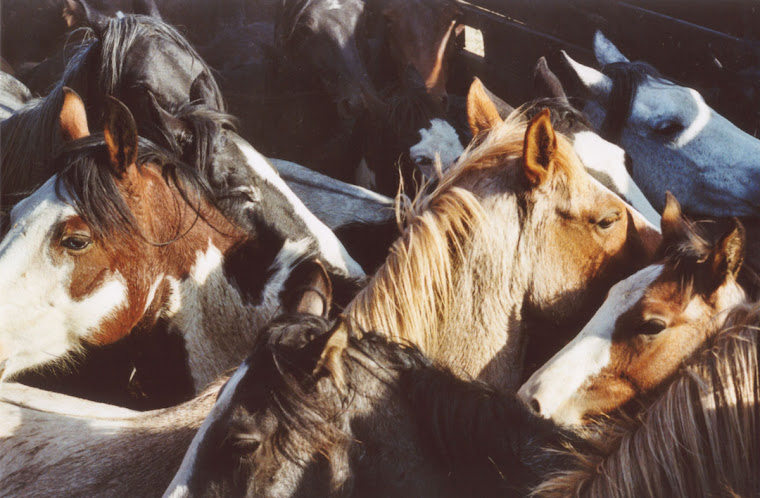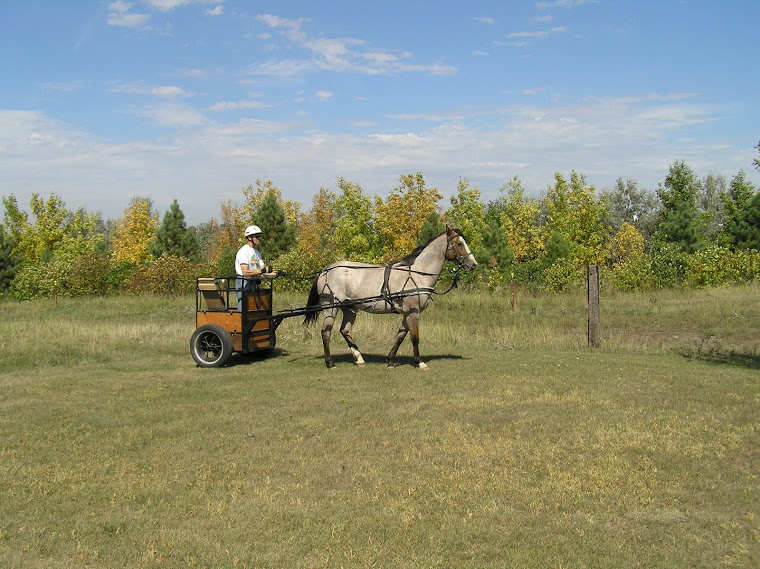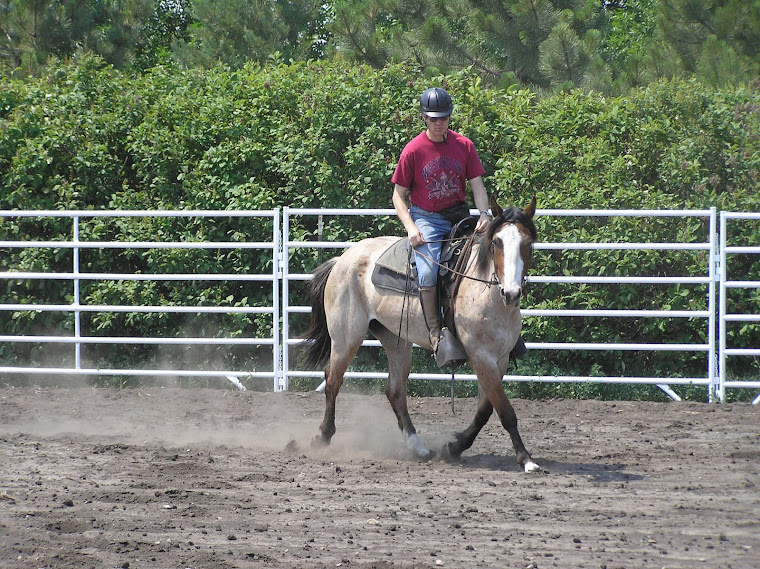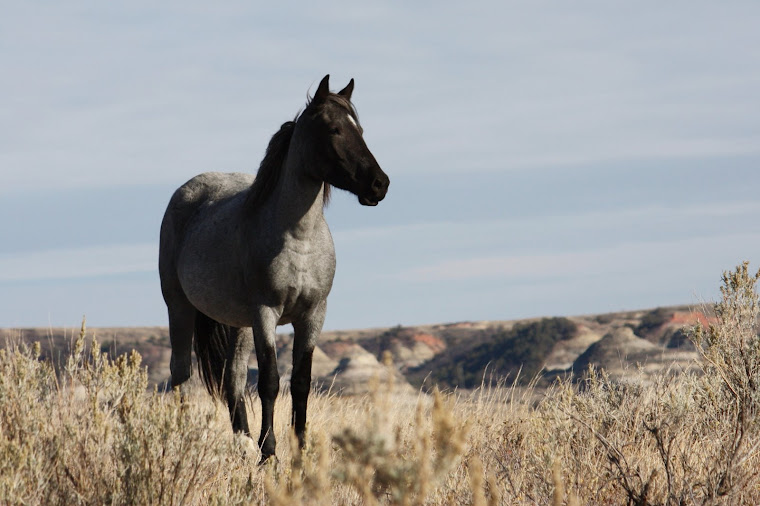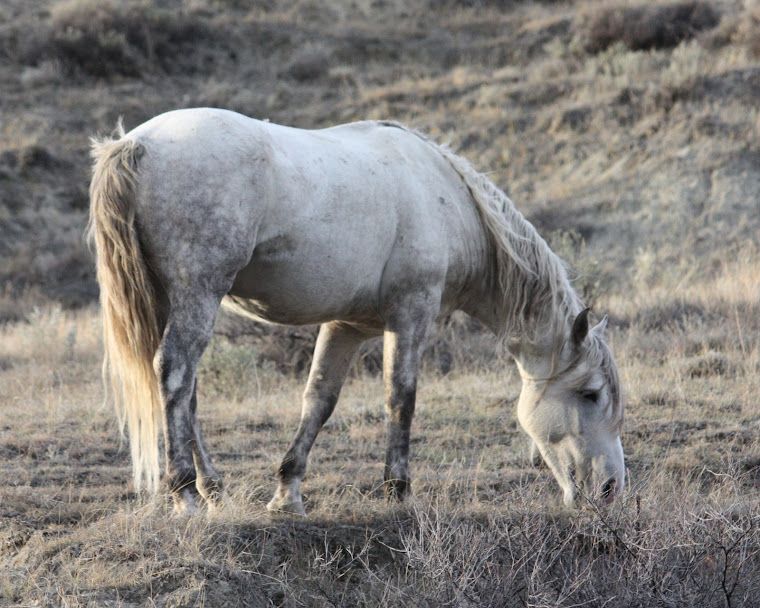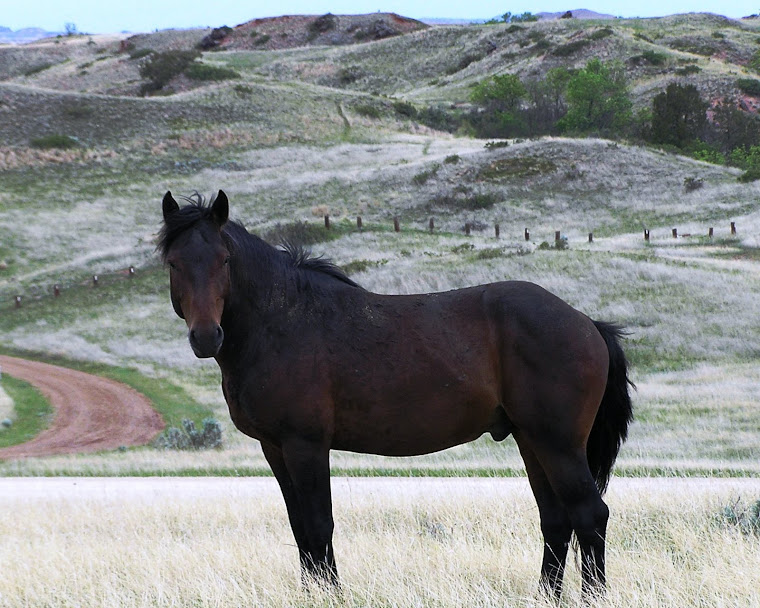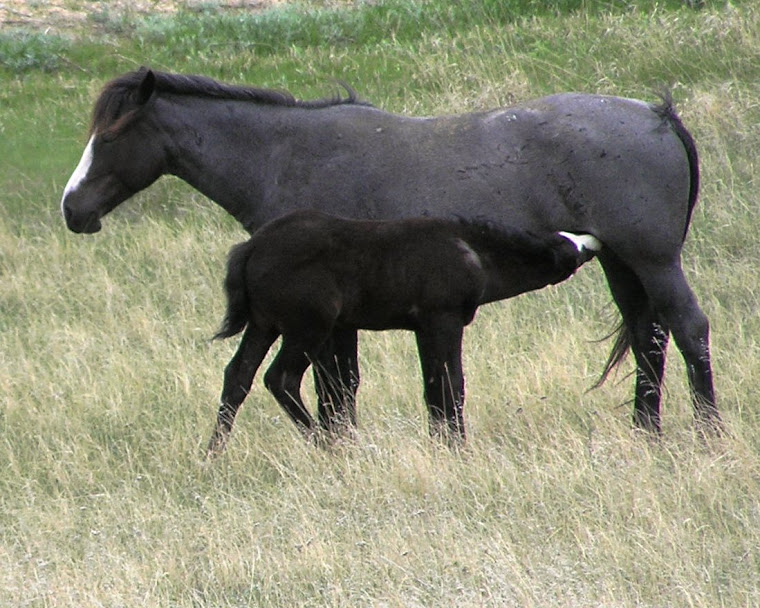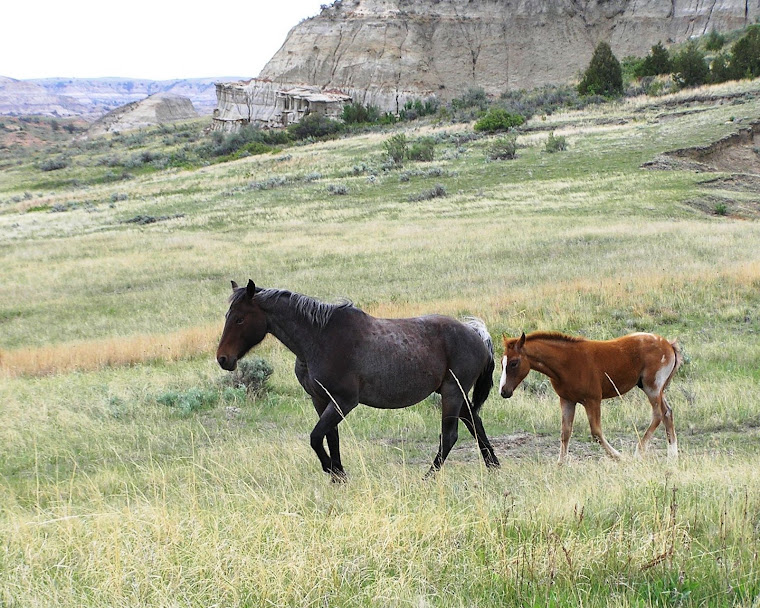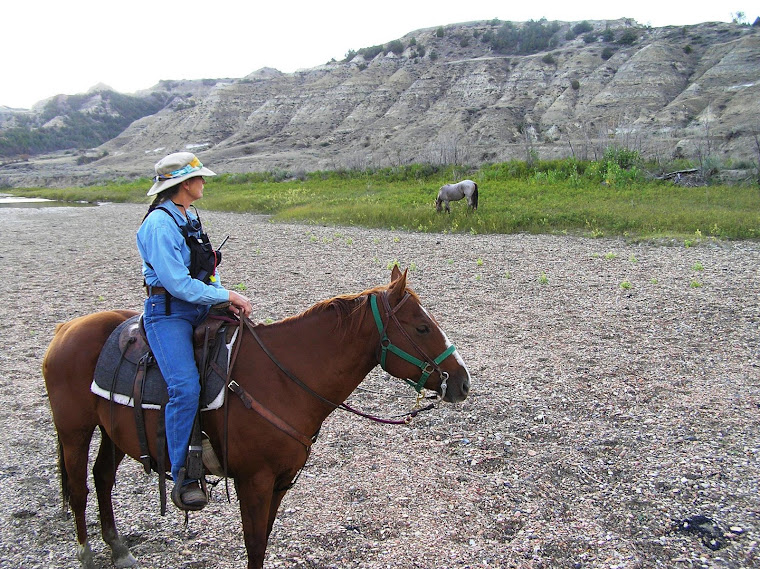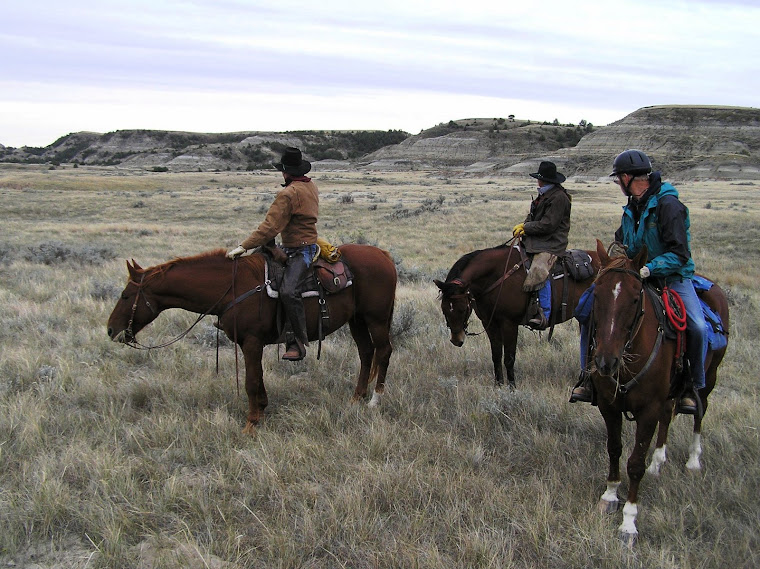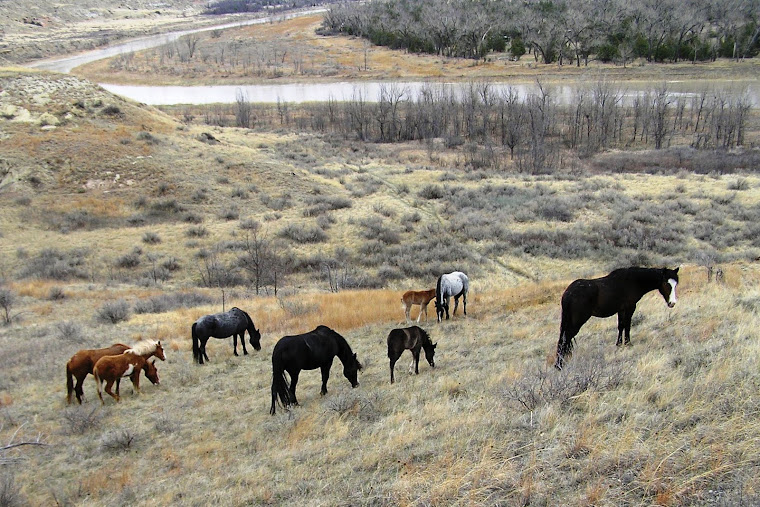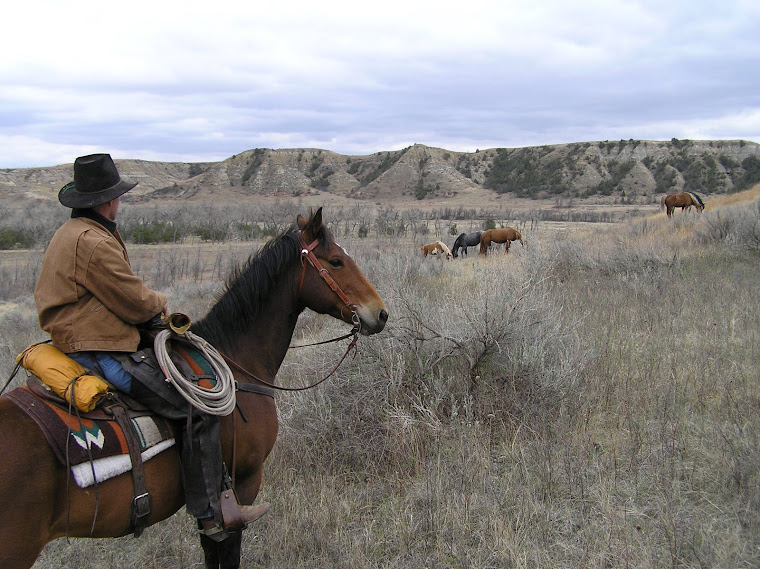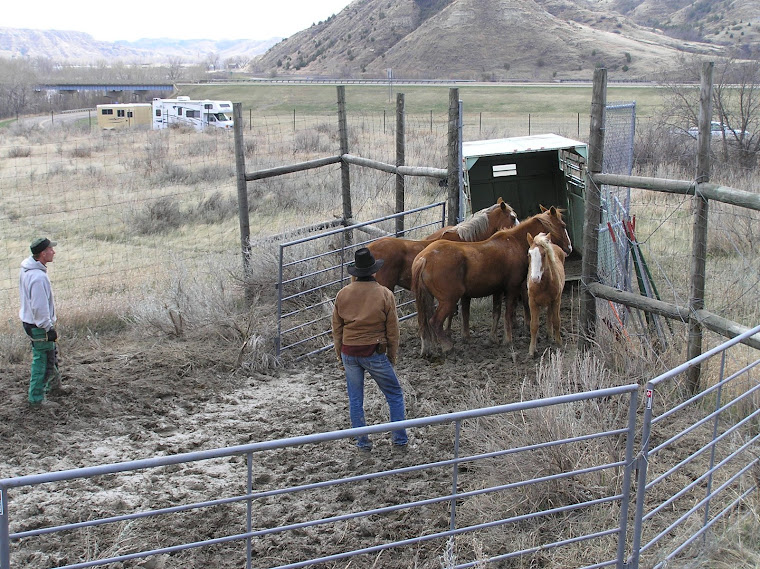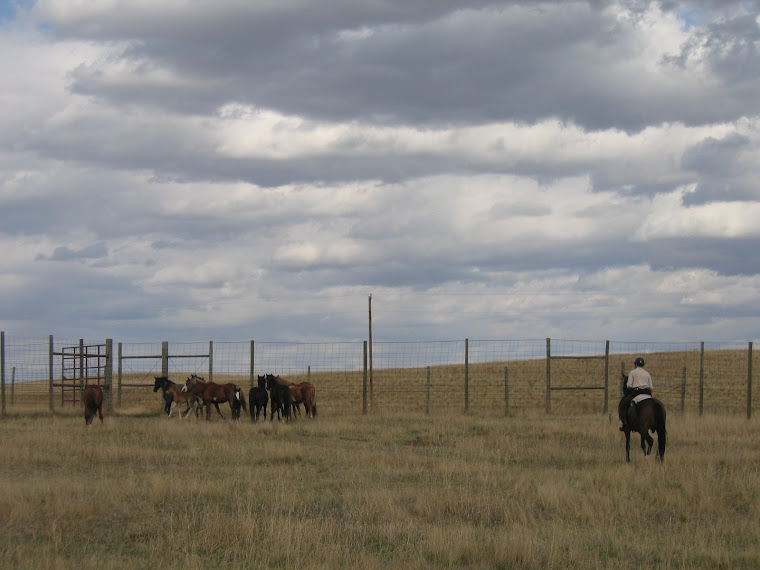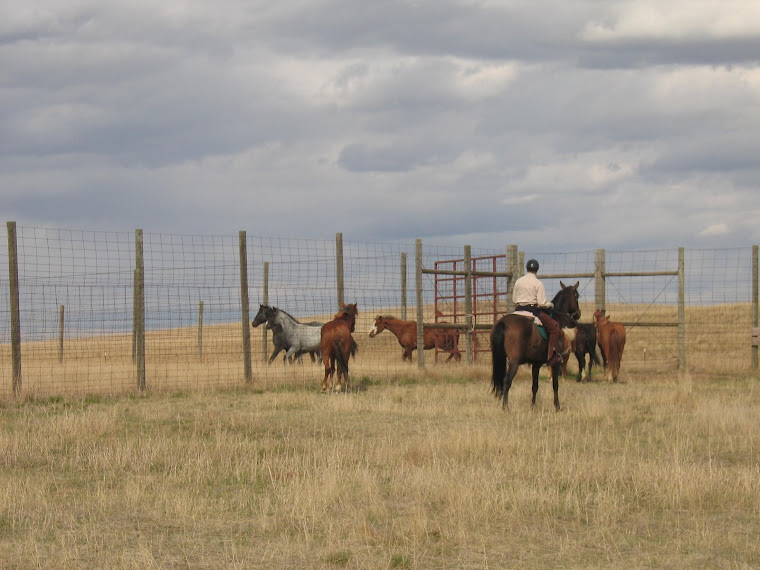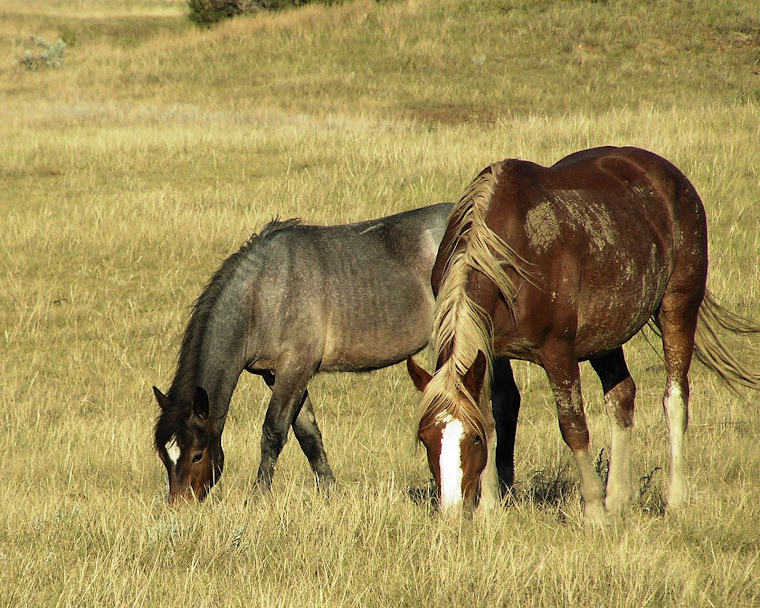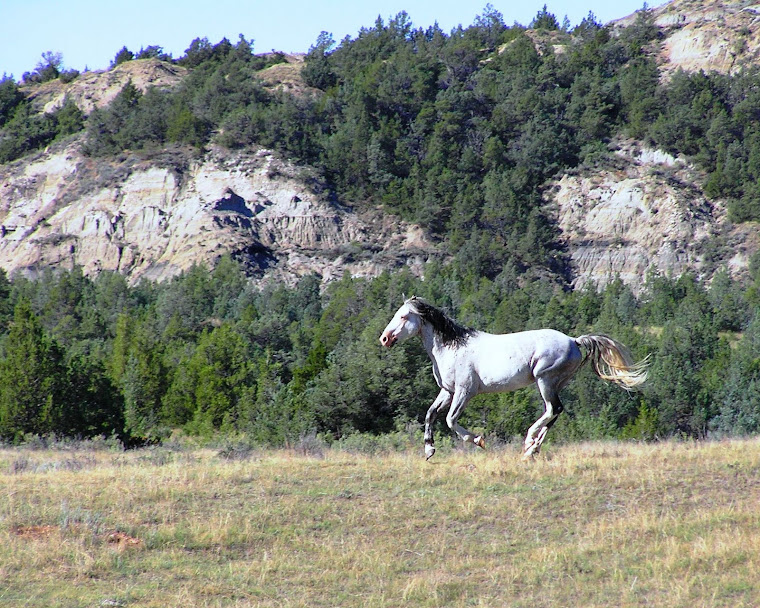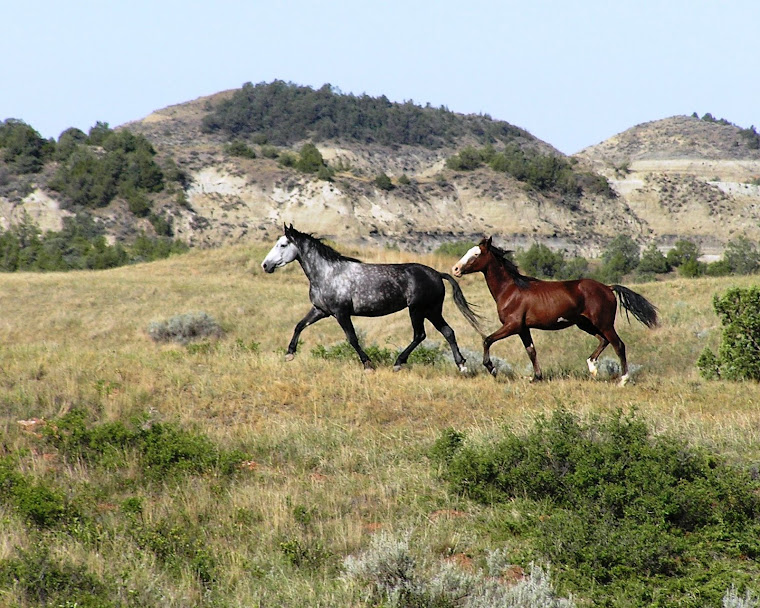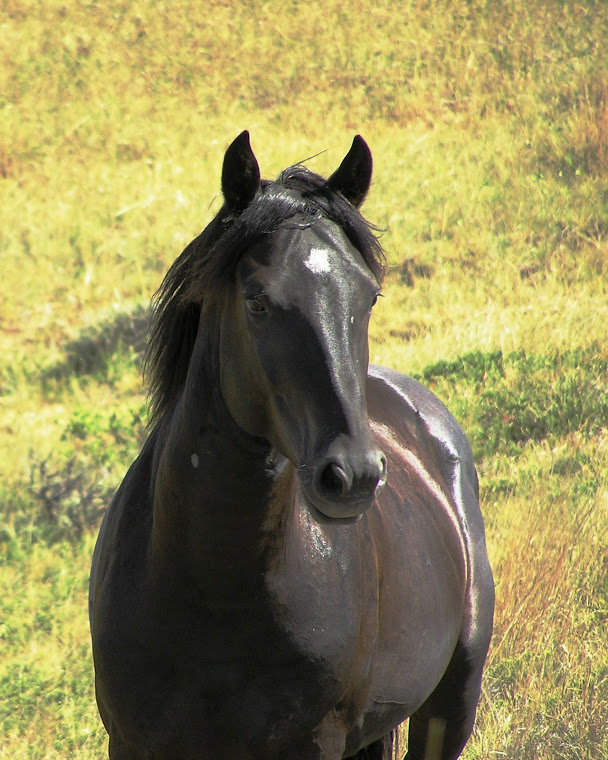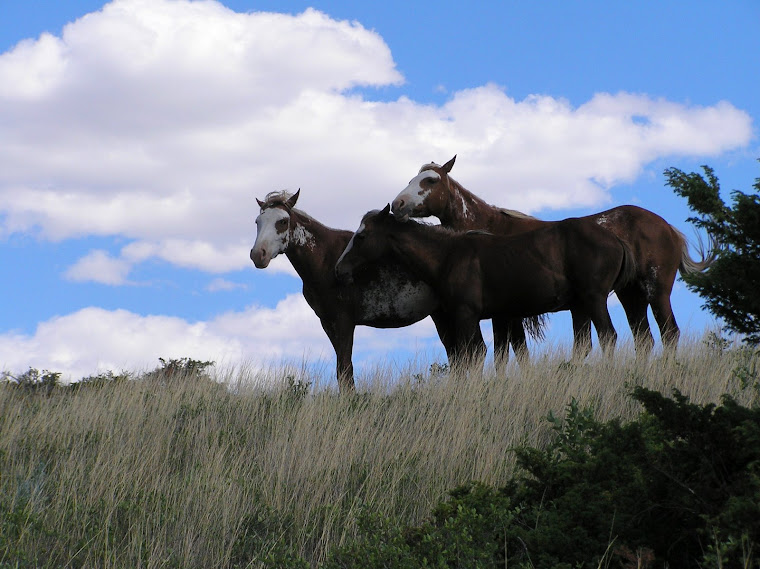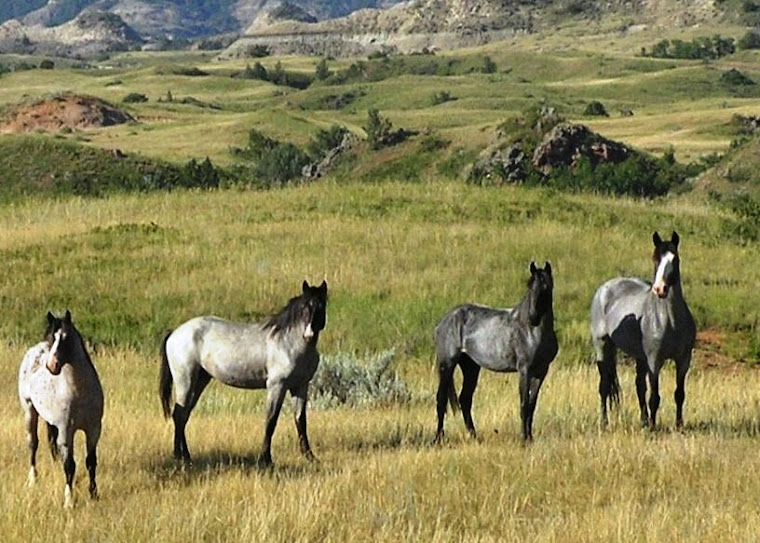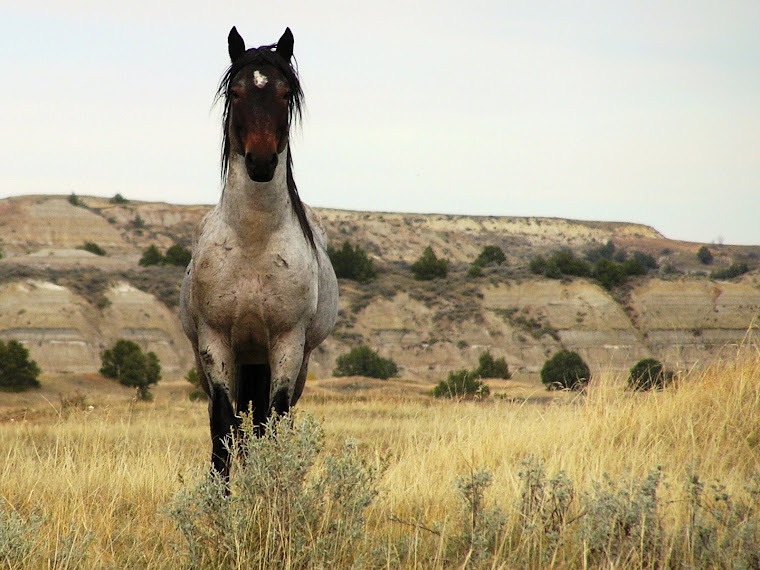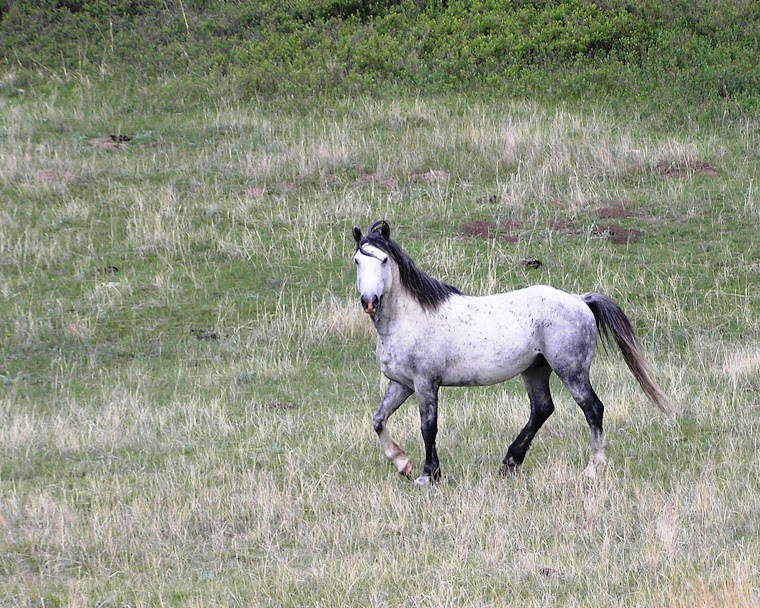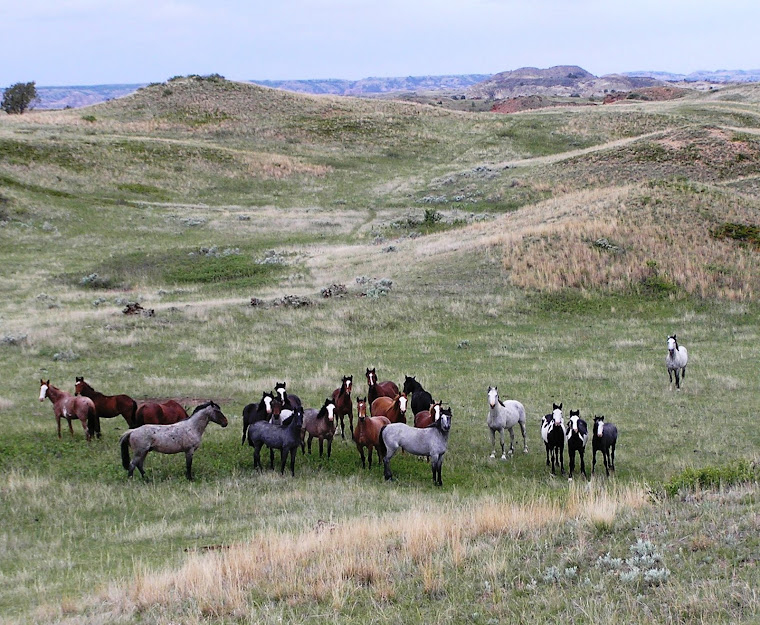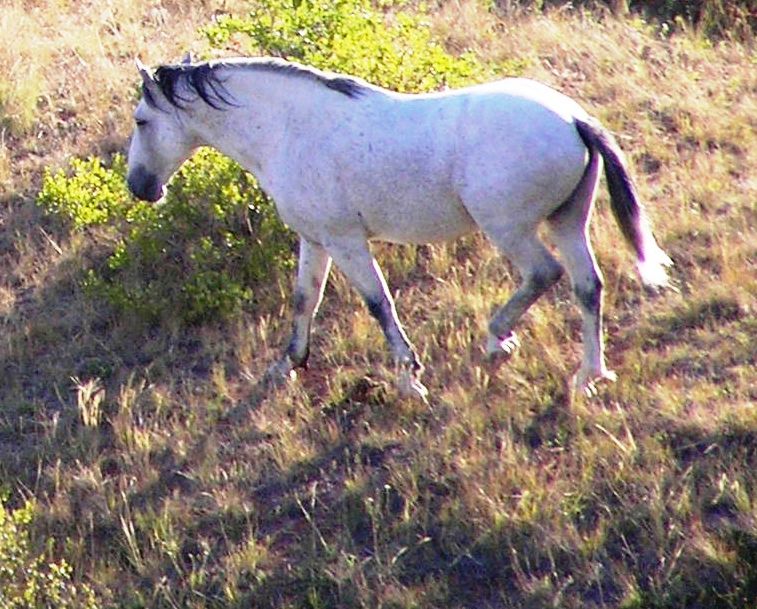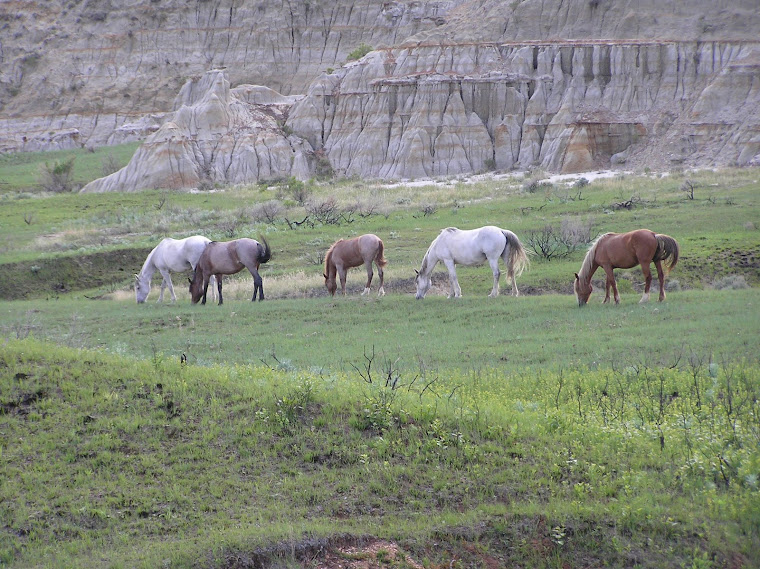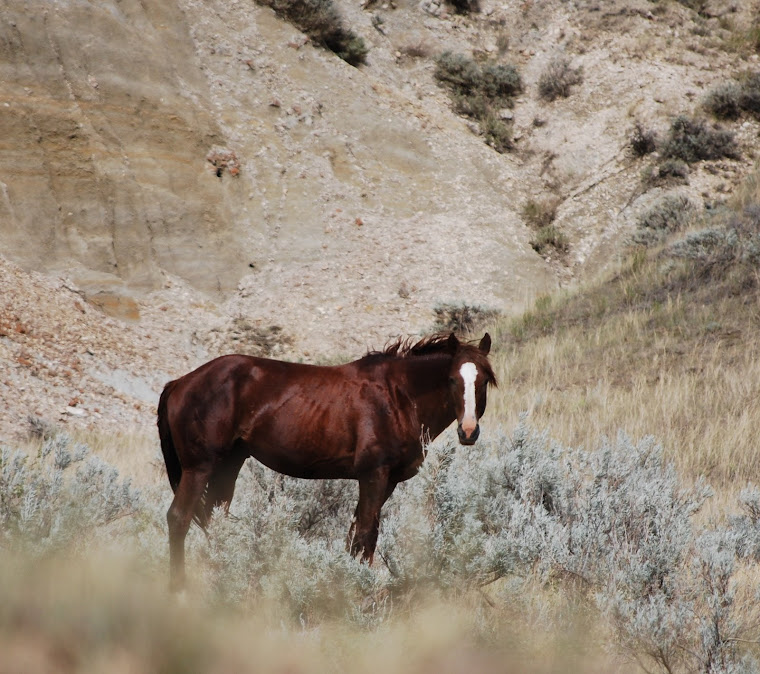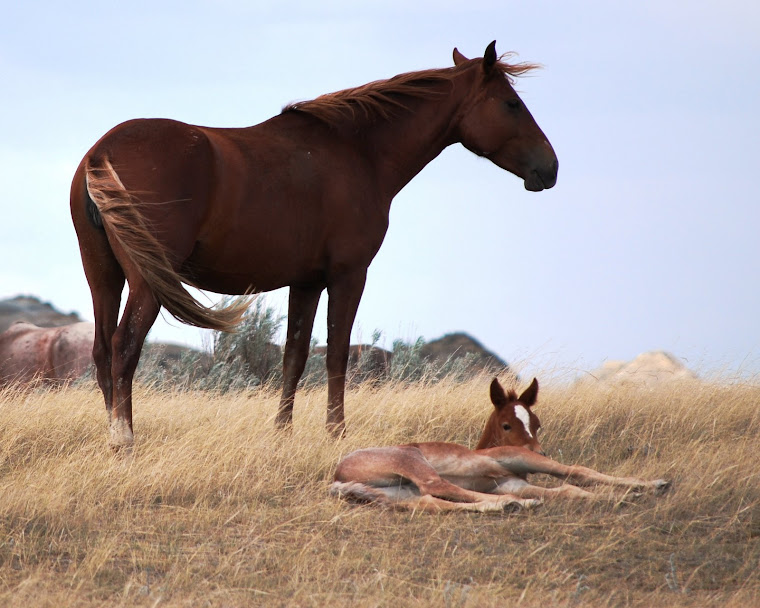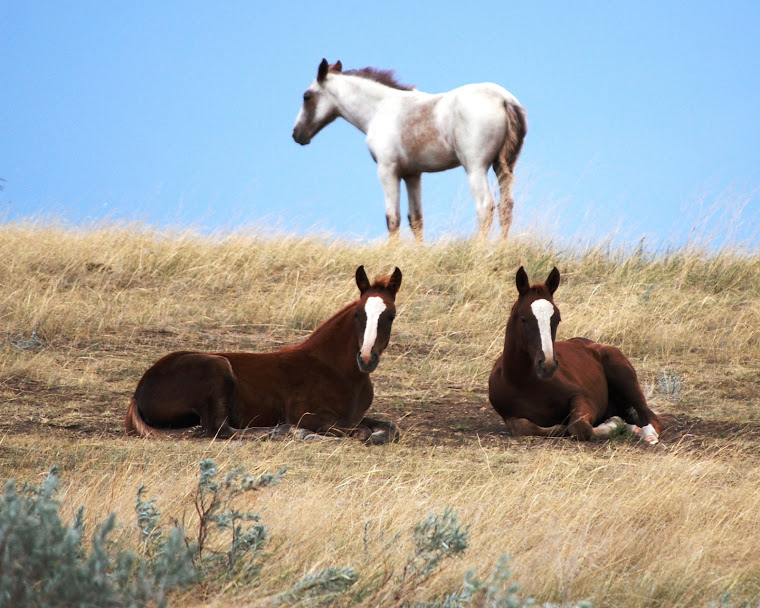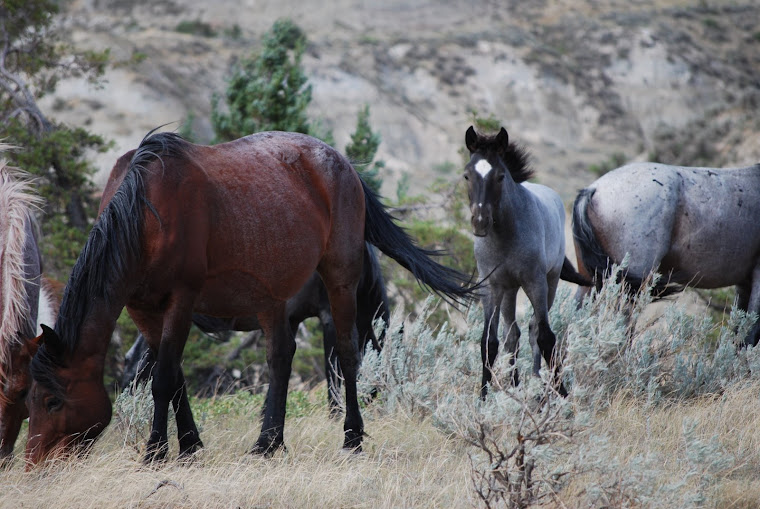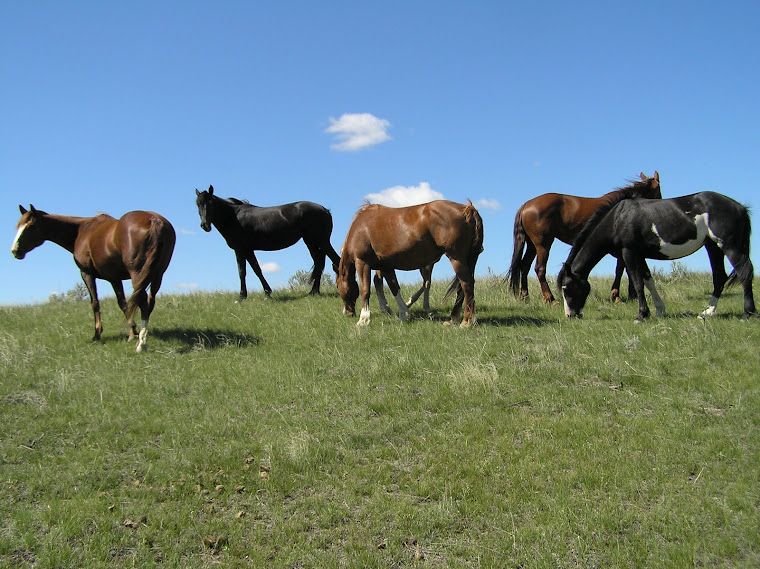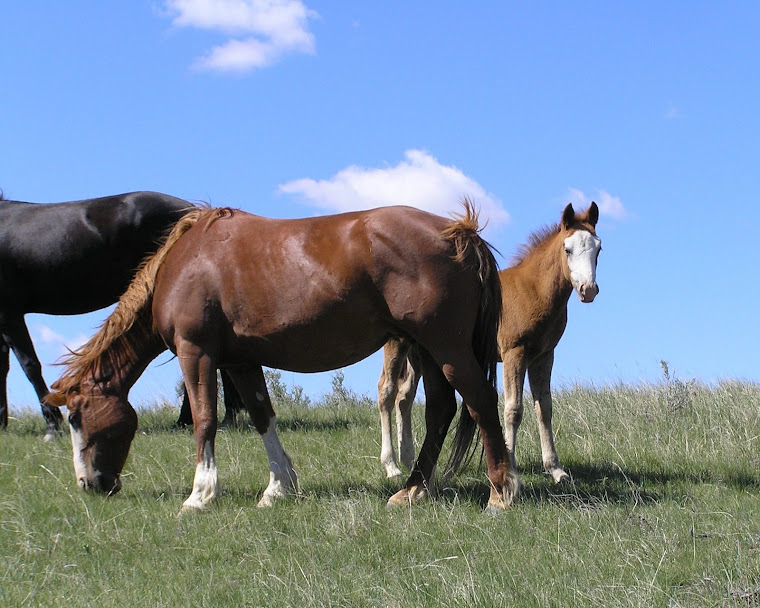Every year for the past three years I
have been involved in the feral horse fecal collection project in Theodore
Roosevelt National Park. It may seem
like a strange and nasty job, but it is the best way to determine if the
contraceptive used on 28 mares in 2009 is successful at preventing pregnancy,
since a fetus will produce enough estrogen after 90 days of gestation that it
will be very evident in the feces of the mare.
Therefore, every mid-November several of us, who have been working with the
Colorado State Feral Horse Reproductive Study and a few volunteers head out to
find every mare and collect two sample of fresh manure from each. The first two years we had plenty of help and
warm weather, so the collections went quickly, but in 2012 it had just snowed 3-5
inches and then started melting, which made spotting the horses very difficult
against a mottled black and white landscape.
Plus, we only had two of us who knew the horses, so we were limited to
two teams or sometimes one team and one single.
Maggie
went alone the first day finding several bands along the fence near the
Interstate. Sandy and I found a couple
small bands that were generally hard to locate, so we were short on numbers,
but glad to have found them without much searching. The second day, Dan and Maggie found all the
bands that usually hang along the Interstate and Sandy and I spied Cocoa and
Mystery from Buck Hill. We had to climb
up the north side of Buck Hill through the Cedars and the snow to find Cocoa
and confirmed that Busy Blue was still missing.
Though climbing down and up the steep muddy east side of Buck Hill was a
challenge reminiscent of a pyre trip to those same flats, we made it out to
Mystery and even had barely enough daylight to catch a sample from Ruby who,
along with her two fillies, had been taken by Granite’s Boy and were right
along the loop road. At the end of two days we were still missing about half
the mares. The third day, Dan and I
hiked a good ten miles and found a few horses, but none that we needed. We say Blaze’s band just north of Talkington
Trail but we were a long way from them and even farther from our vehicle so
opted to hurry back to the road where we could meet Maggie on her way by and
catch a ride back to our vehicle, then our hike in to Blaze wouldn't be so
far.
It was a great idea except that when
I got back to the road my phone was no longer in its pouch. In all my hopping and jumping over gullies
and sliding down slippery slopes, it had worked its way out and disappeared. I told Dan I would go back for it and he
could go get the Durango. After checking
all the pockets I had, off I went back across the meadow, up the hill, over to
where we had eaten lunch, saying a little prayer that God would help me find my
phone. Back I came, again tracking myself
through the mud and snow. I could hear
Maggie calling to me, so I tried to run the rest of the way to the road. Maybe they had found my phone in my bag. I wasn’t so lucky and neither were they; I
had the Durango keys in my pocket. Back
I went across the meadow. I knew I had
bent down to look at a skull and had not found it the first retracing of my
steps, so I was intent to find that skull this time. Finally after going almost to the hill, I was
able to look back and see the skull.
Back to the skull I trudged, but still I found no phone. I was beginning to wonder, but still had
faith the Lord was going to show me where to go. About fifteen feet farther, there it was, my
bright orange phone, facing up, but still showing its narrow orange frame. Thank you Lord! And, we still had enough light to head out
for Blaze. Out we went, my body feeling
like that of a marathon runner, but Blaze was nowhere to be found.
The next morning I volunteered to
scout. I took the big scope we call
Bruiser and climbed every high hill I could find to scout for horses. I scoured the park from Buck Hill, but could
not find Blaze. From the top of Horse Trap
Hill, I did see Coal with his new mare, Busy Blue and her filly. Climbing down again, I found them and spent the
next hour waiting for a sample. I headed
back to Buck Hill. Maggie and Dan called
that they had gotten a couple bands on the east side and had hiked in from
there to find Blaze, but had not found him.
Taking one more look through Bruiser, I saw movement north of
Talkington. It was Blaze. It was 3:00.
If I hurried, I would maybe have time to get to them and have about 45
minutes to collect before it got too dark to see. Since they had alluded us all week, I was
determined to get them.
After calling Maggie to let her know
where I was going, I almost ran the ¾ of a mile out to where I had seen them,
hoping to get most of the samples I needed.
When I got there, I saw that Blaze had Flame and Jud from Redface’s
band. Half of his mares were on one side
and the others, along with him, Flame, and Jud were on my side of a wide
gully. Flame was extremely agitated to
be held away from her band. I could read
the fear and anxiety in her eyes. Just
then Satellite and his family showed up over a nearby hill. I was about to try to get my camera out as
all the horses stood facing me when Flame made a break with Jud glued to her
side and Blaze close on their heels.
Flame broke directly toward me, since she had never had anything to fear
from me. Blaze was not so trusting of me
and hesitated, giving Flame and Jud a little head start. It did not last long;
Blaze was soon in front of them, driving them back at me toward his band. Flame would have none of it; she was
determined to go back to Redface and the rest of her family. They churned around in the cedars and breaks
for long minutes as I worried about delicate little Jud trying to stay out of
the way and keep up with his mother. His
eyes were huge with fright, but he would not leave his mother’s side. I momentarily lost sight of them in the
cedars. Just then Blaze’s mares on my
side of the gully took off across the gully to the rest of the band. That must have been what made Blaze give up
on Flame, because he came charging back, wheeling away when he almost ran up my
trail, and joined his band running off in the distance. I was so happy for Flame and Jud. Flame had been with Reface for at least six
years; that was where she belonged.
I followed Blaze’s band to a meadow
wondering if they would continue to run, since they were all so wound up by
now, but they settled to grazing and I settled among them to wait. The sun had set several minutes ago and it
was almost dark when Diamond gave me a sample.
That was it, I could still get it and get back before I lost all my
light. I hurried to the pile and plunged
my gloved hand into it to see if it was warm, proving it was the fresh sample I
needed. It was, but I had forgotten to
take my knit glove off that I had put on over the latex glove. Oh, Well, it was washable! I collected the samples quickly,
stuffed them into my pocket, put on my head lamp, and almost ran through the near
darkness back to the Durango. I thought
a little about what would happen if I got hurt or if I ran into some animal on
the way back. I was careful where I put
my feet, but thinking how stupid I was to be so stubborn. I guess the really good adventures never come
without a little risk.



